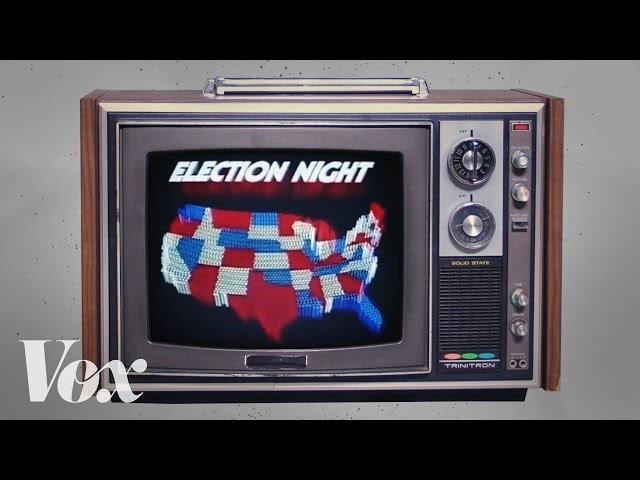That “red state-blue state” division is a relatively modern TV creation

When director Kevin Smith called his 2011 horror film Red State, there was no ambiguity about what that title implied. After all, Americans had been conditioned by then to associate the color red with the Republican party and, more generally, with conservative political values. Walmart, NASCAR, Ray Stevens. These were red-state things. Blue, on the other hand, indicated the Democrats and liberalism. When the next presidential election rolls around in November, the major networks and cable news channels will predictably use those familiar red and blue maps to indicate which states have gone to Donald Trump and which for Hillary Clinton respectively. But this wasn’t always the case. Vox has created a useful and informative video about this troublesome topic entitled “Why Red Means Republican And Blue Means Democrat.” Not only is the red-blue divide a relatively recent innovation, it turns out, but the idea of using colored maps to forecast an election didn’t really start until the 1970s.
In the 1960s and earlier, most TVs were black and white. There was no point in using colored maps. But by 1972, when Richard Nixon trounced George McGovern, the majority of Americans owned color sets. Back then, however, CBS used blue for the Republican states. It made sense at the time: Blue was the color of the Republican-led Union army during the Civil War, while red was associated with leftist politics. It was ABC that switched the colors during the 1984 election. Ronald Reagan was a Republican running for reelection that year, and his name started with the letter R… for red. The other networks eventually copied ABC so as to not confuse viewers who were hopping back and forth between channels on election night.
So Republicans were now red and Democrats blue. But no one really cared about this until the incredibly close and bitterly contested 2000 election between George W. Bush and Al Gore. Americans spent a lot of time looking at election maps that year, and the image of red and blue states became seared into their retinas. The video points out that talk-show host David Letterman might have been the first to make a joke about the colorful divide, jesting that Gore should govern the blue states and Bush the red. Political pundits and columnists seized on the terms “red state” and “blue state,” too, and today they’ve become part of political iconography. The change, however irksome, may be permanent. Blame color TV and late-night comedians.